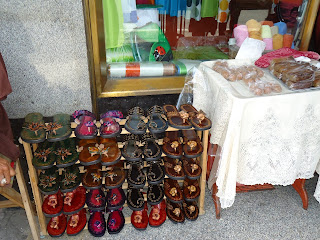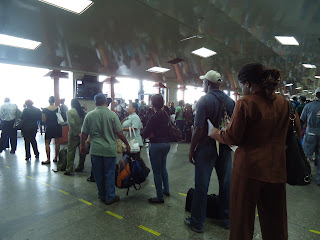The three blogs that I really felt something toward were on crime, "Trinidad: a nation of Villains and Heroes, Victims and their Tormentors..." by Hannah Sammy; "Where do you feel Included: Exclusivity in Port of Spain" by Danielle Richards and "Prominent City Architecture" by Nicole Edgard.
Hannah's blog really caught my attention because crime is something I feel is an issue that requires urgent addressing especially in this country where it is getting out of hand. Hannah quoted the functionalist view that crime is necessary as it provides positive functions for social systems. I take this t mean that once there is crime, this means that the country is developing. It is deviance like these that pave the way for future careers as forensic scientists, lawyers, doctors, activist, that bring awareness to situations that lead up to criminal acts and therefore need reconsidering. It further went on to say that it is when these crime rates are abnormally high or low that a problem will surface. Low crime rates may mean there is little activity in terms of economic growth in an area while high ones may mean growth is extremely bias as others (usually the ones committing the crime) are ignored. I feel it can be linked to my blog on pollution as well as the blog on vagrancy because pollution is an issue that is dear to me like crime and vagrancy is a result of those who similarly to criminals may have been handed the shorter end of the stick.
Danielle's blog really caught my attention because I thought it was similar to mine but in truth it was actually the opposite. (laugh out loud) I loved the part where she was doing her interview and got "dismissed" in the end. But one part really stood out where she mentioned that people were still walking or mingling in groups despite that this is a social setting. She reminded me of the pluralism theory that different ethnicities only tolerate each other in certain settings (e.g the market place) and that it may be so for a long time. Why I say it is opposite is because in my blog on parks and recreation, I mention that its role was for relaxation and socialization, a place to gather to establish and strengthen relationships. However, in certain urban spaces establishing friendships may something that I may be looking at through rose-colored glasses.
Finally, Nicole's blog was one that was quite similar to mine. One of her statements that what caught her attention was the similarity of Catholic Churches around the world. This was practically the same discovery I made in my blog on Catholic church architecture, that they were something distinctive in every urban space in every country. Another factor she mentioned that I found quite interesting was the atmosphere created by the church affects worship and belief. The whole theological aspect of cathedrals and chapels are so distinct that should they be built contrary to the Vatican rules, "die hard Christians" may oppose this and protest it.
I felt all my colleagues did a terrific job and it is amazing to see how different people can have different approaches to situation in urban spaces even if it is somewhat contrary to what the literature says.
Until next year,
FAREWELL
Marcelle
















.JPG)
.JPG)







